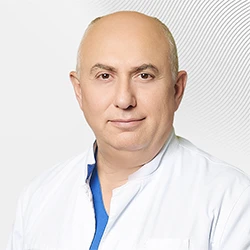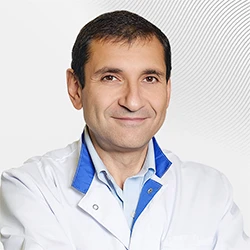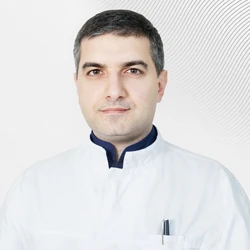At the ECSTO Clinic, Doctor of Medical Sciences, Professor By A.A. Kardanov (Prof.KARDANOV A.A.)Hip replacement surgeries are performed in elderly patients with femoral neck fractures.
Unfortunately, today many of us are familiar with the situation when elderly patients with fractures of the femoral neck and proximal femur are denied surgery by most of both public hospitals and private clinics. The main reason for the refusal is age, whereas in fact the biological and chronological age of each individual is not always the same. As a result, relatives often have to take patients home and take care of bedridden patients on their own, which is extremely difficult. According to statistics, non-operated elderly people with hip fractures die within the first year after injury in more than 80% of cases. If an endoprosthesis operation is performed, the figures are exactly the opposite – more than 80% survival during the first year after surgery.
Professor A.A.Kardanov commented on ECSTO's efforts to remedy this situation: "Often a patient is considered inoperable a priori, since it is much easier and safer to operate on young and safe people than to take on the risk of saving an elderly patient. It is salvation, because breaking the usual stereotype of life and movement for an elderly person is practically a disaster. During forced lying, the work of internal organs and systems is disrupted, chronic diseases decompensate, blood clots form in the veins of the lower extremities, pressure sores and other troubles, which usually cause people to die after a few weeks or months. In our clinic, such patients are operated on on the first day or two, as in the entire civilized world.
It should be understood that people die on the operating table (or immediately after it) extremely rarely, and not from fractures per se, and not from the operation itself, but from heart attacks, strokes, thromboembolism, etc. Of course, if during the preoperative examination anesthesiologists found similar problems, then first of all they will deal with the threatening ones. life conditions, and only after the stabilization of the general situation should the issue of surgery be resolved. If, according to the preoperative examination (which in our conditions takes 2-3 hours), there are no absolute contraindications to surgery, then it is necessary to resolve the issue in its favor.
The advantage of this particular algorithm of actions is as follows. Firstly, today's endoprosthesis is 30-60 minutes of pure surgical time with minimal blood loss. Secondly, after the implantation of the endoprosthesis, walking with a full load on the operated leg is allowed the very next day after the operation, which prevents patients from losing the ability to walk independently. Thirdly, even in the supine position, rehabilitation takes place with the participation of instructors and a special automated tire, which bends and unbends the operated limb in a preset mode.
When we take an aged patient for surgery, we can guarantee that the surgical intervention will be carried out as quickly as possible, the artificial joint will be installed exactly the one that is optimally suitable in this case, and in the postoperative period everything will be aimed at discharging the patient as prepared as possible for his usual life. As a matter of fact, that's how it happens."
Questions and answers
.webp)






















.webp)








.webp)

.webp)



